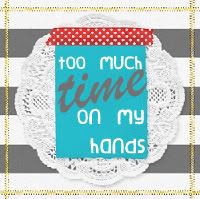I'm always a bit "iffy" about moldy foods. If you are a cheese lover like me, you've probably faced the same dilemma: when is it safe to eat?
I found these great tips to distinguish the good from the bad. Check them out!
1. Hard salami and dry-cured country hams
The USDA says: It is normal for these shelf-stable products to have surface mold. Use. Scrub mold off surface.
2. Hard cheese
The USDA says: Use. Cut off at least 1 inch around and below the mold spot. Mold generally cannot penetrate deep into the product.
The USDA says: Use. Cut off at least 1 inch around and below the mold spot. Mold generally cannot penetrate deep into the product.
3. Cheese made with mold
The USDA says: Discard soft cheeses such as Brie and Camembert if they contain molds that are not a part of the manufacturing process. Molds that are not a part of the manufacturing process can be dangerous. (Can’t tell? Discard.)
The USDA says: Discard soft cheeses such as Brie and Camembert if they contain molds that are not a part of the manufacturing process. Molds that are not a part of the manufacturing process can be dangerous. (Can’t tell? Discard.)
4. Firm fruits and vegetables
(such as cabbage, bell peppers, carrots, etc.)The USDA says: Use. Cut off at least 1 inch around and below the mold spot. Small mold spots can be cut off FIRM fruits and vegetables with low moisture content. It’s difficult for mold to penetrate dense foods.
(such as cabbage, bell peppers, carrots, etc.)The USDA says: Use. Cut off at least 1 inch around and below the mold spot. Small mold spots can be cut off FIRM fruits and vegetables with low moisture content. It’s difficult for mold to penetrate dense foods.















Great post. For salamis, dry-cured hams, chorizo etc, what I grew up doing was to get a damp towel and clean their surfaces until you see no more mold. For hard cheeses, they are kept very well in a bowl with extra virgin olive oil. Not only will they not dry out too much, nor will they get mold. Make sure you cover the bowl though with a towel. Use the olive oil in anything you are cooking with cheese.
ReplyDeleteI also consider the "ewwwwwww-factor". If it looks super nasty to me, it's going in the trash. I don't care if the USDA says it's safe. ;)
ReplyDeleteAlso, I will NOT be sharing this article with my husband as his motto is "it's still good". He'll try to keep everything in the fridge if he reads this!